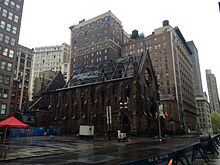
The Los Angeles Fire Department provides firefighting services as well as technical rescue services, hazardous materials services and emergency medical services to the citizens of the city of Los Angeles, California, United States. The LAFD is responsible for approximately four million people who live in the agency's 471 square miles (1,220 km2) jurisdiction. The Los Angeles Fire Department was founded in 1886 and is the third largest municipal fire department in the United States, after the New York City Fire Department and the Chicago Fire Department. The department is sometimes also referred to as the Los Angeles City Fire Department or "LA City Fire" to distinguish it from the Los Angeles County Fire Department, which serves unincorporated areas and, via contracts, other incorporated municipalities within Los Angeles County without their own fire departments. The department is currently under the command of Chief Kristin Crowley.

The New York City Fire Department, officially the Fire Department of the City of New York (FDNY) is the full-service fire department of New York City, serving all five boroughs. The FDNY is responsible for fire suppression and fire prevention, and is a major provider of EMS services in New York City. Beyond fire suppression and EMS, the FDNY is responsible for a broad range of services, including technical rescue, CBRN defense, and structural collapse response and analysis. The FDNY is equipped with a wide variety of general-purpose and specialized Vehicles,Tools and Equipment to serve its varied missions.

Ladder 49 is a 2004 American disaster thriller film directed by Jay Russell and written by Lewis Colick. The film follows Baltimore firefighter Jack Morrison, who is trapped inside a warehouse fire, and his recollection of the events that got him to that point. The film stars Joaquin Phoenix and John Travolta, and was released on October 1, 2004. It received mixed reviews and grossed $102 million worldwide.
Firefighting jargon includes a diverse lexicon of both common and idiosyncratic terms. One problem that exists in trying to create a list such as this is that much of the terminology used by a particular department is specifically defined in their particular standing operating procedures, such that two departments may have completely different terms for the same thing. For example, depending on whom one asks, a safety team may be referred to as a standby, a RIT or RIG or RIC, or a FAST. Furthermore, a department may change a definition within its SOP, such that one year it may be RIT, and the next RIG or RIC.
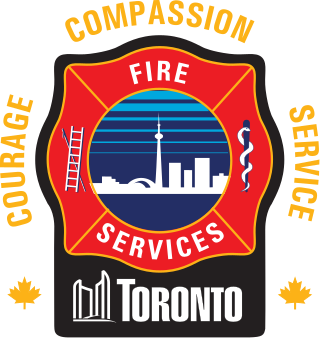
Toronto Fire Services (TFS), commonly called Toronto Fire, provides fire protection, technical rescue services, hazardous materials response, and first responder emergency medical assistance in Toronto, Ontario, Canada. Toronto Fire Services is currently the largest municipal fire department in Canada.

Vancouver Fire and Rescue Services (VFRS) was founded in 1886 and today serves the city of Vancouver, British Columbia, providing fire, medical first response, rescue and extrication services. In 2017, VFRS responded to 67,000 emergency calls.
The San Diego Fire-Rescue Department (SDFD) is an all-risk, all-hazards fire department, providing fire protection and emergency medical services to the city of San Diego, California, United States. The San Diego Fire-Rescue Department is the second-largest municipal fire department in the state of California, after Los Angeles and responds to nearly 162,000 calls per year. The San Diego Fire-Rescue Department covers 343 square miles of service area including 17 miles of coastline, with responsibility extending 3 miles offshore.
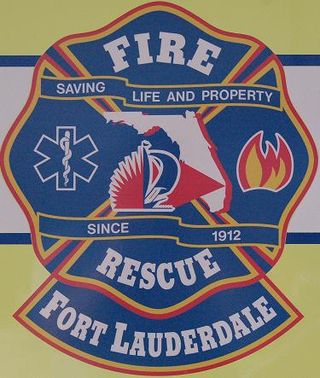
Fort Lauderdale Fire-Rescue Department is the fire and rescue service provider for the City of Fort Lauderdale, Florida, as well as the cities of Wilton Manors and Lazy Lake through service contracts. Additionally the FLFRD is responsible for ARFF at Fort Lauderdale Executive Airport. In 2013, the department responded to 44,387 calls for service.

The Boston Fire Department provides fire services and first responder emergency medical services to the city of Boston, Massachusetts. It also responds to such incidents as motor vehicle accidents, hazardous material spills, utility mishaps, floods, explosions, and construction accidents among others.

The Detroit Fire Department (DFD) provides fire protection and emergency medical services to the U.S. city of Detroit, Michigan.

The Charleston Sofa Super Store fire disaster occurred on the evening of June 18, 2007, in Charleston, South Carolina, and killed nine firefighters. This was the deadliest firefighter disaster in the US since the September 11 attacks. Though the fire was believed to have started in some discarded furniture in the loading dock area, the exact source of ignition remains undetermined. After the fire, the store was demolished and bought by Charleston and a fire station was built nearby.

Firefighting in the United States dates back to the earliest European colonies in the Americas. Early firefighters were simply community members who would respond to neighborhood fires with buckets. The first dedicated volunteer fire brigade was established in 1736 in Philadelphia. These volunteer companies were often paid by insurance companies in return for protecting their clients.

The San Antonio Fire Department provides fire protection and emergency medical services for the city of San Antonio, Texas. The department is the third largest fire department in the state of Texas. With over 1,800 members, the SAFD is responsible for a population of over 1.4 million people spread across 408 square miles (1,060 km2).

The Baltimore City Fire Department (BCFD) provides fire protection and emergency medical services to the city of Baltimore, Maryland, United States. Founded in 1797 and established in 1859, the Baltimore City Fire Department covers an area of 81 square miles (210 km2) of land and 11 square miles (28 km2) of water, with a resident population of over 640,000 and a daytime population of over 1,000,000. The BCFD responds to approximately 235,000 emergency calls annually. There are two International Association of Fire Fighters (IAFF) locals; IAFF 734 for firefighters and IAFF 964 for officers.
The Yonkers Fire Department (YFD) provides fire protection and emergency medical services to the city of Yonkers, New York, United States.
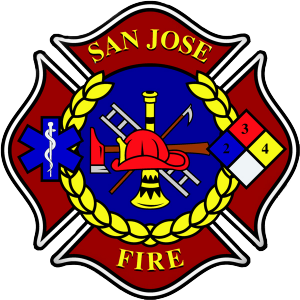
The San José Fire Department (SJFD) provides firefighting, rescue and emergency medical services to the city of San Jose, California, United States. The San Jose Fire Department protects the third largest city in California and the tenth largest city in the nation.

The Vancouver Fire Department (VFD) provides fire protection and emergency medical services to the city of Vancouver and, by contract to Clark County Fire District 5, in Washington, United States. The VFD's response area is 91 square miles (240 km2) with a population of over 294,000 (2023). The VFD has the highest call volume per firefighter in the state. ALS transport is provided by AMR, making the VFD's service area population by far the largest in Western Washington without public ALS ambulance service.
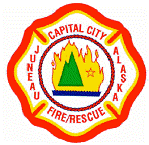
Capital City Fire/Rescue (CCFR) provides fire suppression and emergency medical services to the city of Juneau, Alaska, United States.
The Teaneck Fire Department (TFD) was established in 1915 and provides fire protection, rescue and first responder emergency medical services to the Township of Teaneck, New Jersey. The TFD has 94 employees: 92 uniformed firefighters and 2 civilian employees. The department is directly responsible for over 41,000 residents living within the 6.23 square miles of Teaneck. Furthermore, The TFD routinely provides mutual aid to 6 surrounding communities in Bergen County, further assisting an additional 139,000 people over an additional 18.52 square miles.
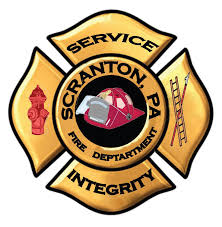
The Scranton Fire Department provides fire protection, rescue services, hazardous materials mitigation, to the City of Scranton, Pennsylvania. The department used volunteer fire companies throughout its history and was established as a career fire department on May 4, 1901. The city maintained a combination of paid and volunteer firefighters from 1901 to 1907 when a full time department was established. The Scranton Fire Department remains a full-time all career department today, with a total of about 142 professional firefighters and fire officers protecting the City of Scranton.

